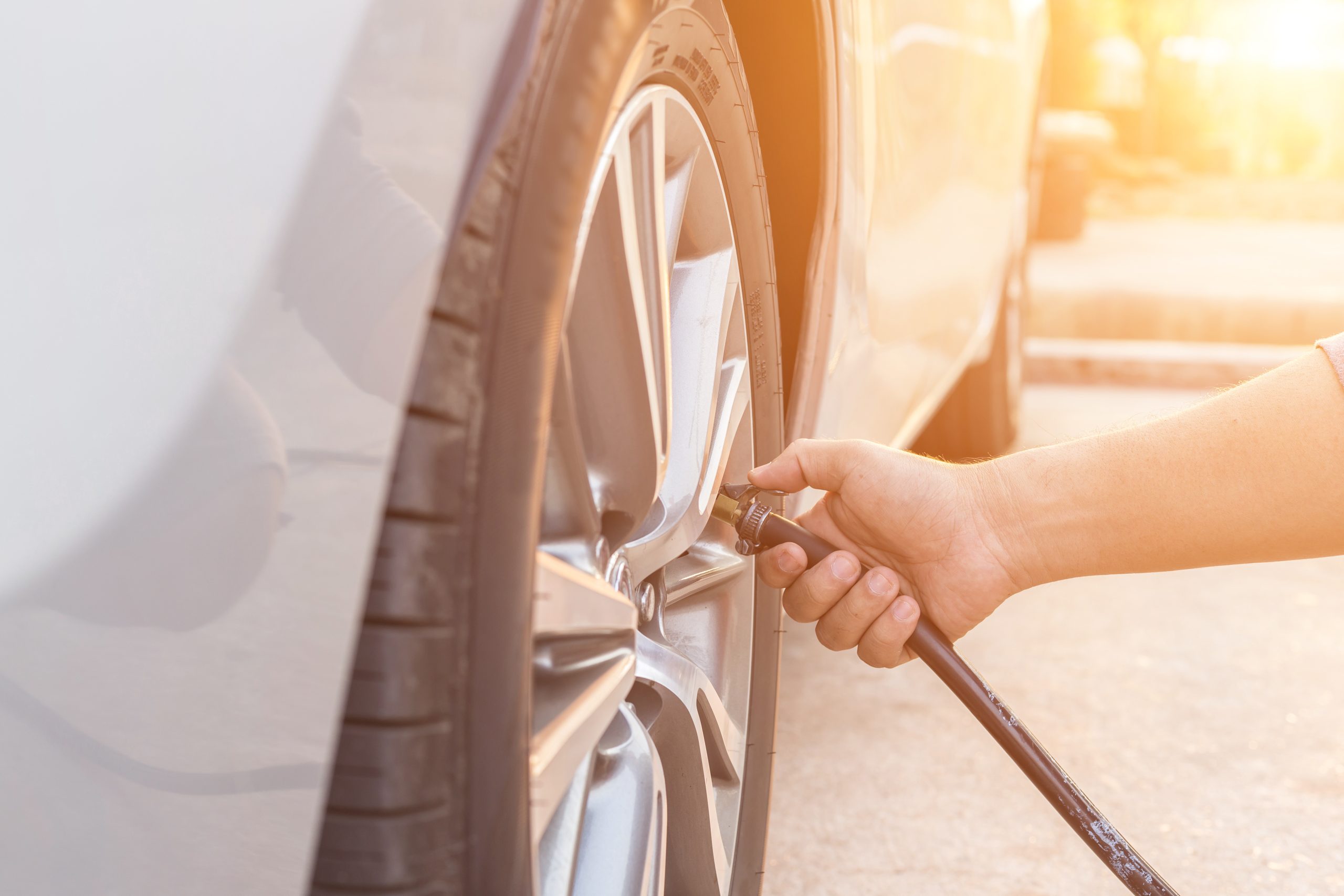Cold Weather Safety: What To Do When Your Tire Pressure Drops

We’ve all seen the tire pressure light come up on our dashboard. While usually, it is not a cause for concern, it might not be something you want to wait on. Yes, cold weather can affect your tire pressure during the winter, but it could also be an issue caused by a nail, pothole, or other manufacturing error. If this happens to you while actively driving, you would probably pull over and immediately call your mechanic. However, did you know there are a few things you can do when your tire pressure drops? Here are a few tips to get you safely back on the road when your tire pressure light appears, and how to prevent it.
Tire Pressure 101
Your tires serve as the primary point of contact with the road. They are responsible for performance, including handling, ride quality, braking, and overall safety. To ensure optimal performance, your tires must maintain appropriate air pressure, tread, and proper balance. Your wheels should also be properly aligned.
To check this, every tire comes with a recommended air pressure right on the tire itself. This can be found either on the side of the tire or in your car’s owner’s manual.
Well-maintained tire pressure can help with fuel efficiency, lifespan of your tires, prevention of blowouts, and of course, a smoother ride. Air pressure should be checked at least once a month, making sure that your tires are sufficient for the road and preventing warning lights while driving. Tires lose about 1 PSI pre month. If your tires are losing more, it may be a sign of a leak.
Causes Of Loss In Tire Pressure
Loss in tire pressure can be caused by something as simple as a drop in temperature. In fact, for every 10 degrees the temperature drops, you can lose up to 1 pound of pressure in each tire on top of the 1 pound lost every month. It’s also important to keep this in mind on those rather cold mornings. Just because your light may come on early in the morning, it may disappear once the heat of the day sets in. Tires warm up as they drive, so make sure to test that theory before worrying about bringing your vehicle in for an inspection.
However, tire pressure can also be lost due to damage or hazards. If you find your lights are coming on regularly, it might be best to check your tires for nails, glass, or other road hazards that may be out of your control.
What To Do
When you notice a drop in tire pressure, the first thing you should do is check all of your tires. This can help you determine which one is causing the issue, or if it affects all your tires. This can be done with a simple tire pressure gauge. Then, simply add air to its recommended amount and see if your dash light disappears.
Once you’ve added more pressure, take a ride around the block to see if the light disappears. If the light does not disappear, or you find an issue while adding air, it may be time to give C&G Auto a call for inspection.
Preventing Tire Pressure Drops
The easiest way to keep your tires in good shape is to check your tire pressure constantly. Again, once a month is usually recommended. This process takes less than five minutes, and can save you stress on the road.
It also does not hurt to check your tire pressure after driving on particularly rough roads. This could include gravel, potholes, or other unpaved areas that may have caused physical damage to your tires. If you need help learning how to check your tire pressure, give us a call at C&G Auto! We’re always happy to help.
Tire Pressure Maintenance with C&G Auto
Having issues with your tire pressure? You can always schedule an appointment with C&G Auto & Truck. Even if you’re not due for routine tire maintenance yet, getting your tires checked can save your vehicle from unsafe handling and poor performance. Contact us and/or check out more about how we can help you at C&G Auto and Truck.

